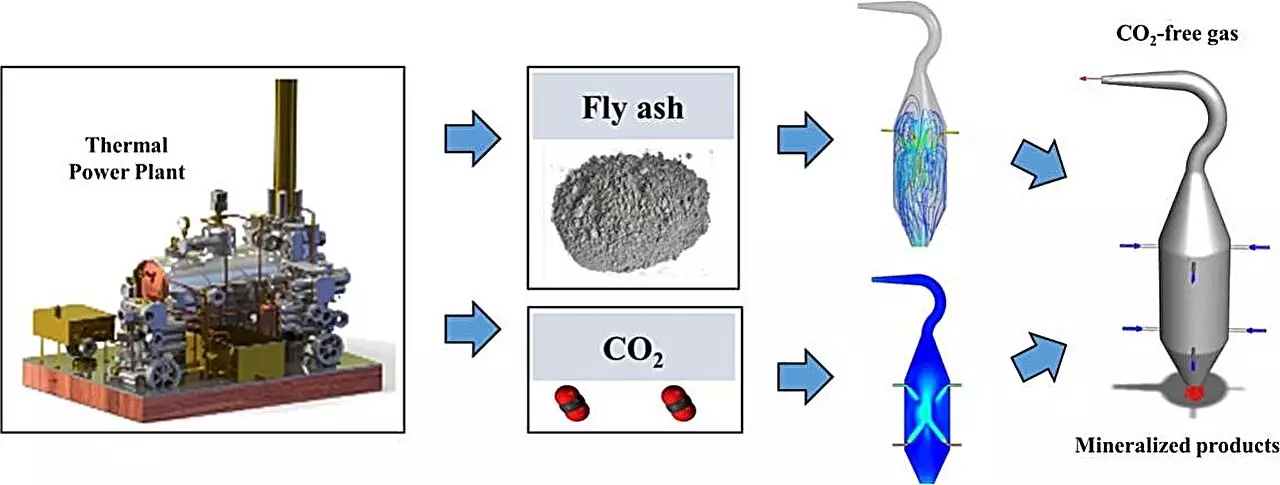Addressing the critical issue of greenhouse gas emissions, researchers have developed groundbreaking reactors that focus on mineralizing carbon dioxide using fly ash particles. This innovative technique not only provides a sustainable solution to the problem of emissions but also repurposes an industrial by-product in the process. With the rise of industrialization comes a surge in CO2 emissions, which are a major contributor to global warming. While current carbon capture, utilization, and storage (CCUS) technologies struggle with efficiency and cost, using fly ash, a by-product of coal combustion, shows great promise in CO2 mineralization.
Challenges in Current Reactor Designs
Despite the potential benefits of using fly ash for CO2 mineralization, existing reactor designs face challenges in achieving the desired synergy between gas-particle interactions and operational efficiency. This highlights the need for a thorough exploration of innovative reactor configurations and operational adjustments to overcome these hurdles. Research conducted by Shanghai Jiao Tong University and published in the Energy Storage and Saving journal on May 7, 2024, sheds light on this issue through a meticulous computational optimization process.
The study introduces two distinct reactor designs tailored for CO2 mineralization with fly ash, leveraging computational fluid dynamics for optimization. The impinging-type inlet design focuses on enhancing interfacial interactions, prolonging particle residence times, and boosting mineralization rates. On the other hand, the quadrilateral rotary-style inlet emphasizes streamlined flow for efficient mixing and reaction efficacy. By exploring operational parameters such as flue gas velocity, carrier gas velocity, and particle velocity, the research team identified optimal ranges that promise to enhance reactor performance, ensuring effective CO2 mineralization and phase separation post-reaction.
Dr. Liwei Wang, the principal investigator of the study, emphasizes the significance of these findings in advancing carbon capture and utilization technologies. By refining reactor designs and operational parameters, the research team has achieved a significant improvement in CO2 mineralization efficiency. This not only benefits sustainable waste management but also offers a practical approach to reducing industrial carbon emissions, aligning with global climate action efforts. The research also has significant implications for coal-fired power plants, providing a new purpose for the fly ash they produce. By converting this by-product into CO2 mineralization, the study opens the door to lower carbon emissions and a reduced environmental impact of fly ash disposal.
The research on fly ash mineralization reactors represents a major step forward in the realm of sustainable waste management and CO2 sequestration. By focusing on innovative designs and operational fine-tuning, the study offers a promising solution to the pressing issue of greenhouse gas emissions. Through the utilization of fly ash, industrial by-products can be repurposed to mitigate environmental harm, contributing to a more sustainable future. The broader applications of this research extend beyond waste management, presenting a comprehensive approach to CO2 sequestration that could reshape the landscape of CCUS technology.


Leave a Reply
You must be logged in to post a comment.